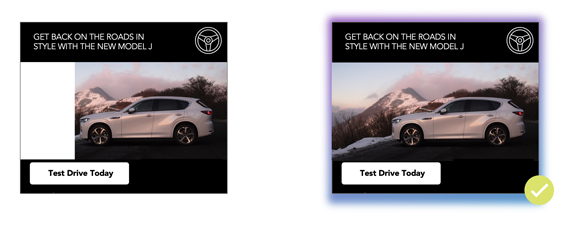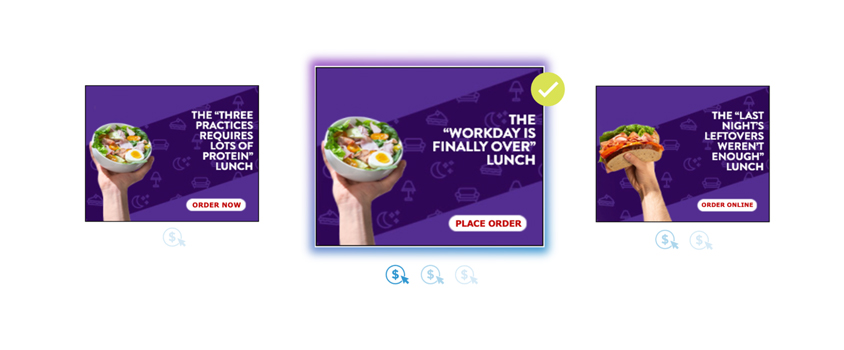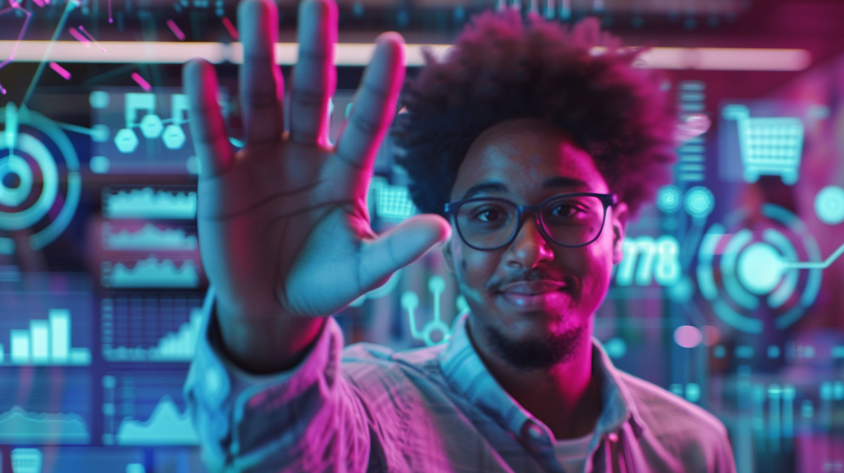When the first wave of Gen AI hype arrived online it made many marketers sit up and listen and ask the big questions.
- Can AI be used to create ads from scratch?
- Will designers find their work replaced by generative AI tools?
It’s especially interesting when considering all of the creative versioning and Dynamic Creative Optimization (DCO) platforms out there today and ramifications of disrupting these workflows.
Spoiler alert: generative AI is not a direct replacement for these platforms. Let’s dive into the 5 key ways AI and DCO will come together to make marketers more effective.
1. Think Of AI As Complementary – Rather Than A Replacement For – Your Creative Toolbox
The reality is that an image alone is not an ad. Neither is a video or a line of copy, no matter how it was generated.
In this day & age, customers expect a degree of personalization in their advertising and are more likely to turn on ad blockers or take a negative view of irrelevant messaging.
The answer to this is ensuring there is a close link between creative and data. Marketers need dynamic data-driven creative that can evolve based on the available consented data points, without having to manually build all these creative variations and linking them to audiences.
An AI tool could help you generate 100 creatives pretty quickly but the challenge then becomes getting the right on-brand message in front of the right user at the right moment. Any time saved in creative generation is pretty quickly wiped out by the time it takes to build in rapidly changing offers, incorporate relevant products and attach to a responsive audience.
That’s why with Jivox we’ve focused on providing a framework for dynamic creative at scale, with AI capabilities built-in throughout the DCO campaign lifecycle to supercharge your workflows. You start by building a base creative master in any design tool (i.e. Photoshop, Figma or our built-in Creative Design Studio) so you can get your brand’s look and feel exactly the way you intended. What’s more you can make use of AI features available in those tools, like Adobe Firefly, for even more creative freedom.
With the fun part out of the way you can then start looking to AI to accelerate some of the less exciting parts of the campaign launch process, such as automatically repurposing one master design for all other ad sizes.
2. Expand Your Creative Testing Capabilities With Asset Generation
A dynamic creative master can bring together many image, video or copy assets together and assemble the right combination that will appeal to each of your audiences. However you may be short of assets – or just short of inspiration – to plug in in the first place, which is a great use case for using generative AI to expand your selection.
Let’s say you are a shampoo brand and you have lots of great product packshots; it’s a nice looking bottle of shampoo but it’s not going to fly off the shelves solely based on a picture of it on a white background. You may have a couple of professionally shot backgrounds already but why stop there? Generative AI could create new background images in seconds based on a quick prompt; “An exotic beach scene with blue sea in the background and a flat area to the left of the foreground” immediately gives you a new scene for the sea salt shampoo to really stand out.
This unlocks a lot more opportunity for testing different creative strategies. Does showing the product in a tropical environment resonate with the user? Or perhaps more realistic bathroom scenes? Or maybe luxurious silky backgrounds conjure up a more enticing proposition for audiences? It’s not cheap to determine creative strategy but gen AI can help you easily gauge what to invest more in and roll out tests across channels with minimal lift. You can now generate new image or copy assets directly in Jivox Dynamic Canvas Studio to add new variations into the mix.
3. Get The Perfect Fit Every Time With AI Asset Resizing
Now here’s a perfect use case for a mundane task marketers can offload to our AI helpers. Most brands have a lot of image assets. But not all of those assets are always a good fit for ads, especially when it comes to adapting across multiple ad sizes across an ever-expanding selection of channels.
Take an automotive brand for instance. In many cases images of cars driving through vast scenic landscapes make for stunning showcases for the vehicle; however most of the time these are wide landscape images that just don’t look good when either cropped or reduced in size to fit into more vertically native formats like a 300×600 banner or an Instagram Story. The worst case scenario being ugly white letterboxing or borders around the image where its clear it doesn’t fit into the ad design and the designer hasn’t had the time to address it.

Not only can the system automatically re-size the image to fit into the ad size but it can also fill in any gaps by extending the scene. An image of a car parked on a mountain landscape can be extended with more road being filled in along the bottom and more of the sky painted in along the top. Now the ad captures the entire car at an appropriate level of zoom but fills the entire ad unit with a gorgeous environment.
Try it today in Jivox Dynamic Canvas Studio.
4. Offload Decisions To Optimize ROAS
Making decisions is not always easy and us humans have a cap on just how many data points we can evaluate at any given time before it becomes overwhelming. Just look at the repetitive wardrobes used by the likes of Mark Zuckerberg and the late Steve Jobs as a way to supposedly combat decision fatigue.
Within marketing there are decisions at every junction: which message to show to which audience? What combination of image and CTA placement will be more effective? Should we show products the user has already searched for or similar items? Many of these are not just a decision at the time of setup but a recurring daily question on how to get the most out of our media spend.

AI can take on a lot of the cognitive load and evaluate all the concurrent variables to work towards your objective. For example, Jivox DecisionGraph automates the delivery of the most appropriate versions of creative to each audience, which can include a variety of different CTAs and background colors. Those competing elements can be automatically switched out based on performance as the system identifies patterns in viewer engagement and impressions can be shifted into the top performing ad.
For many e-commerce businesses, they will have a vast product catalog and multiple offers to promote that can’t all be individually managed, so automated product recommendations like those in Jivox can continually work to show bestsellers or similar products based on the user’s previous browsing behavior. That way, AI can drive increased ROAS and help inform wider decisions about your brand’s marketing strategy going forward.
5. Turn Data Into Insights With A Question
So much performance data, so little actual insight. That’s the case today with many reports churned out across competing ad platforms; with marketers sinking time into stitching data together from disparate sources and creating pivot tables or dashboards to try and make sense of the data. All this before any real conclusions can be drawn or presented to your boss.
Can AI help us connect the dots with campaign performance data? Absolutely. That’s where we can apply AI in a thoughtful way that completely removes time-consuming tedious tasks from marketer’s to-do lists and helps us develop better performing campaigns.
Now, marketers can simply ask a question in plain English and have the platform answer with ready-made charts that tell you all you need to know in seconds. All these charts can be customized and presented as you prefer with an option to right-click and drill down into the data for more granular insights.
That’s the power of this revolutionary technology; it’s not about replacing human creativity or strategy but rather complementing it. Automating the tedium and the bloat that comes with digital marketing in 2024 and creating time for marketers.
